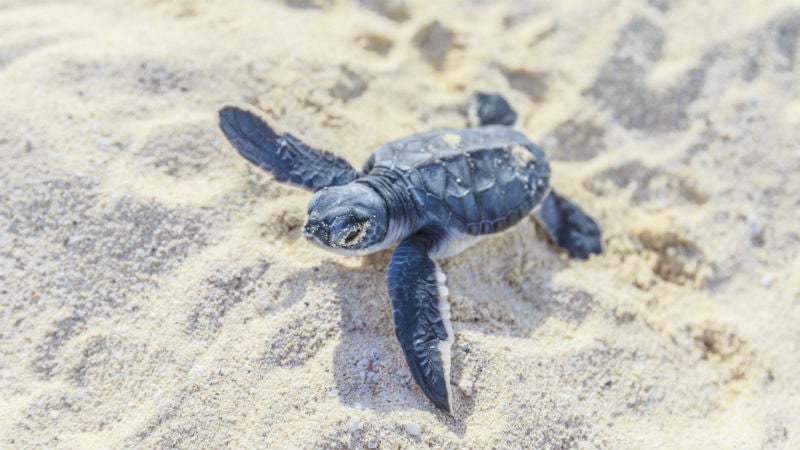Baby sea turtles have it rough. We’ve all witnessed the little green creatures trekking across the sands of despair toward the “safety” of the big blue, and it doesn’t look easy. But where do the survivors go once they make it to the ocean? Scientists have called this juvenile period the “lost years” because tracking the little tykes is nearly impossible—the radios and tracking tags used in the past were bigger than the turtles’ bodies and hindered their ability to move.
Kate Mansfield, a marine biologist at the , came up with something that might change everything: solar panels, .
The panels are small in comparison to just the batteries of the radios and won’t weigh the tiny turtles down. For the first test, Mansfield tagged 17 turtles off the coast of Florida and put them into the Gulf Stream. During a few months of tracking the turtles, scientists discovered that they did not follow the expected path toward Portugal’s Azores using outer gyre currents. Instead, many of the turtles swam to the center of the North Atlantic Gyre, where seaweed gathers. The reason? They use the green plants for shelter and food.
This research was originally published in and is to be a “seminal paper in sea turtle biology.”


